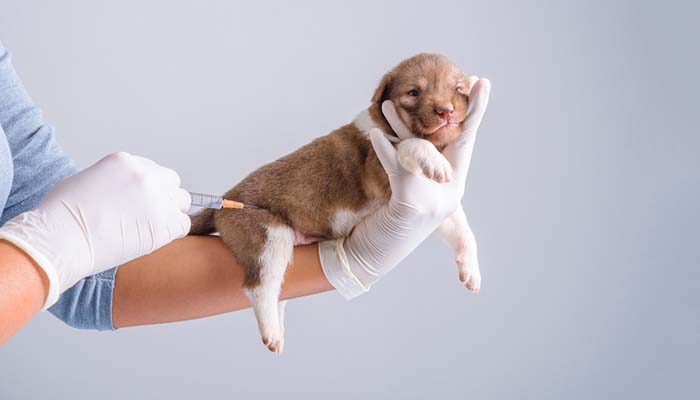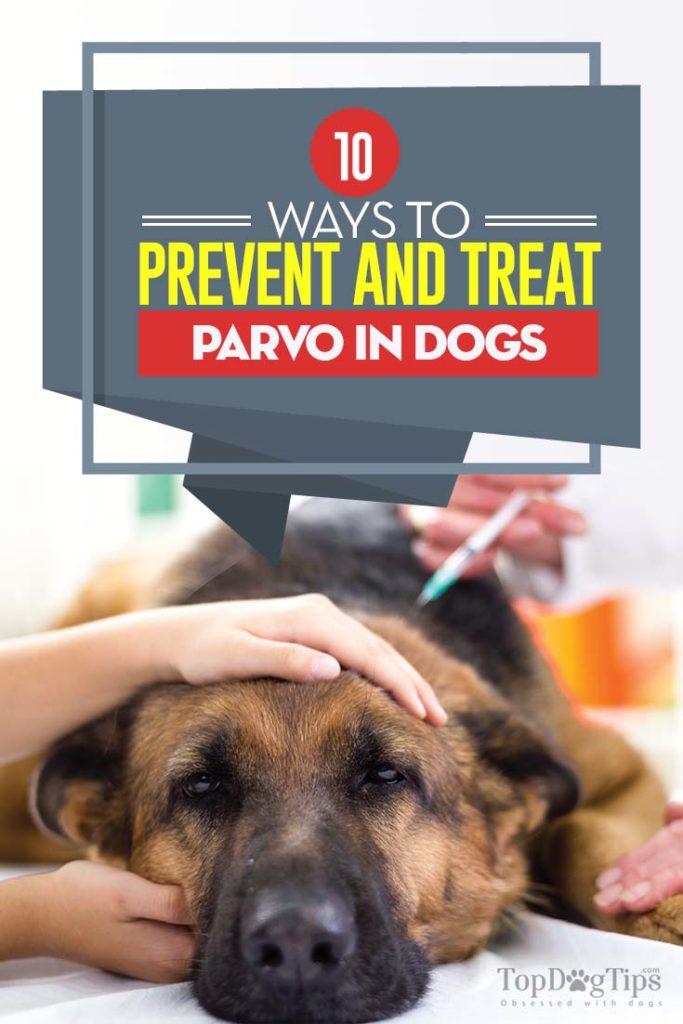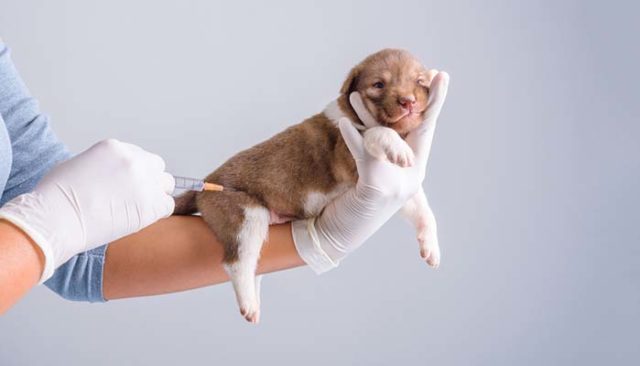
Table of Contents
- What is the Dog Parvovirus?
- 10 Ways to Prevent Dog Parvo
- 1. Vaccinate Your Puppy
- 2. Limit Unvaccinated Dog's Exposure
- 3. Keep Your Dog Close When in Public
- 4. Limit Your Own Contact With Other Dogs
- 5. Don’t Bring Home a New Dog
- 6. Disinfect Everything
- 7. Deworm Your Dog to Reduce the Risk Of Parvo
- 8. Know the Symptoms of Dog Parvo Virus
- 9. Visit Your Vet
- 10. Treat Parvo With Supportive Care
- The Bottom Line
Preventing dog parvo is the best way to ensure your pooch will not contract the virus in the first place.
Canine parvovirus type 2 is dangerous, contagious, and easily contracted.
Statistically, when a dog contracts parvo, chances of making it out alive are slim. Prevention of dog parvo is the only way for you to be certain that your Fido is safe.
What is the Dog Parvovirus?
It's one of the most infamous viral diseases that is often fatal to the dog. People and animals can transmit it by coming in contact with an infected dog's stool.
Canine parvovirus type 2 (CPV-2) is highly resistant and can survive for months in the environment.
Studies have observed that if your Fido is not vaccinated, the chances of him getting parvovirus are very high, and the morbidity rate is 100%.
The mortality rate of dogs with parvo is statistically 10% in adult dogs and 91% in puppies (Appel et al. 1979; Black et al. 1979).
Dog parvo works by attacking rapidly dividing cells in a dog’s body. The intestinal tract is most severely affected by the parvovirus.
CPV also attacks white blood cells in the canine's body. When dogs contract parvo, they can have lifelong cardiac problems if they survive.
With the mortality rate at 10% in adult dogs, many can survive parvovirus, but they will likely always suffer lifelong health problems, usually from chronic myocardial and circulatory complications (Hayes et al. 1979; Robinson et al. 1980).
Canine parvovirus type 2 was named this way to differentiate it from the canine parvovirus type 1 (CPV-1), also known as the minute virus of canine (MVC).
While there are recently reported cases of CPV-1 across the world, CPV-1 is much rarer, often encountered only in puppies and pregnant dogs, and is less dangerous than CPV-2, according to studies (Mochizuke et al. 2002; Pratelli et al. 1999).
By 2010, there have been 30 reported cases of MVC/CPV-1 in the USA.
In the last few decades, new mutants of canine parvovirus type 2 have emerged, which made treatment of this virus more complicated (Buonavoglia et al. 2001).
Scientists discovered that today, we have several variants of the second type of dog parvo, including CPV-2, CPV-2a, CPV-2b, and CPV-2c (Nandi et al. 2010; Decaro et al. 2006; Nakamura et al. 2004).
Because CPV-2 is a more serious and prominent dog parvo type, this article focuses specifically on type 2 rather than CPV-1.
It's clear that contracting canine parvovirus is not something pet owners should risk.
Therefore, preventing dog parvo should be one of the primary concerns rather than trying to deal with it after the fact.
Here are the 10 most effective ways to prevent parvo in dogs and everything else you must know.
ALSO READ: 8 Science-based Ways to Treat Parvovirus in Dogs
10 Ways to Prevent Dog Parvo
1. Vaccinate Your Puppy
Studies show that vaccinating your dog is the best way to prevent parvovirus.
It's proven that we currently have effective vaccines that will prevent all above-mentioned dog parvo types from affecting the dog (Greenwood et al. 1995; Spibey et al. 2008).
Puppies should receive their first dog parvo vaccination at around 6-8 weeks of age, with boosters administered every three weeks until around 16 weeks of age.
They should receive another booster one year later. After that, giving your dog a booster every three years is best.
After the first initial three parvovirus boosters, your dog should have immunity for life.
Regular boosters after that are just to make sure your dog keeps their immunity.
If you adopt an older dog and don’t have access to their shot records, you should give them the parvo vaccination just in case they don’t already have it.
While there are dangers of over-vaccination in dogs (such as unknowingly vaccinating a dog for parvo when he's already been vaccinated before), the risks of contracting dog parvo are much greater than those from over-vaccination.
Your vet will help you follow up on these essential vaccines and the timeline.
2. Limit Unvaccinated Dog's Exposure
If you have a pet you know has not been vaccinated for dog parvo or has not finished receiving their first round of parvovirus vaccines yet, keep him away from other dogs.
Dogs that are vaccinated may be resistant to parvo but can still carry parvovirus, putting unvaccinated dogs at risk (Black et al. 1979).
Unvaccinated puppies are especially at risk of contracting parvovirus since their immune system is weaker than an adult dog’s, hence the likelihood of a puppy's death being at 91% chance.
If your dog has not finished receiving their first round of parvovirus, avoid taking them out unless absolutely necessary.
Any accidental exposure to other dogs or even the virus in the environment will get your dog sick.
Refraining from walking your dog, going to the park, and partaking in other activities with your pooch can be hard, but it is crucial for their health.
A couple of months inside is well worth avoiding this deadly virus.
3. Keep Your Dog Close When in Public
When you absolutely have to go out in public with your unvaccinated dog, such as when you take them to get their parvo vaccine, especially if it's a young puppy, avoid letting your pup touch the ground.
Parvo is a very resistant virus that easily survives in the environment, and anything can be contaminated with it, including leaves and grass.
Dog feces commonly contain parvovirus, and it can be contracted simply by your dog sniffing it (Stann et al. 1984).
Unvaccinated dogs, and puppies especially, can easily contract the dog parvo just from making a quick encounter with it.
A virus enters through the dog's mouth, and there will be 3-4 days before you notice any symptoms of illness.
When you take your unvaccinated dog to the vet, be extra careful about keeping them off the ground.
Sick dogs, even ones infected with parvo, go to the vet as well, which is a risk for your dog.
Continue keeping your dog off the ground until they receive their third parvo vaccination.
Dog carriers can be useful when your dog is still in the process of receiving their parvo vaccinations. It can be a pain to carry a bigger dog breed, but it is necessary for your Fido's safety.
4. Limit Your Own Contact With Other Dogs
Humans cannot contract the parvovirus, but they can carry and transmit it (Jacob et al., 1980). You could easily give parvo to your own dog if you aren’t taking the right precautions.
If you have an unvaccinated dog at home, completely avoid contact with all other animals.
Even if the dog you come in contact with is vaccinated, they could be carrying the virus, and once you come in contact with them, you could also be carrying the virus. This is how dog owners transmit the disease to their own pets.
If you do happen to come in contact with another dog, take precautions to avoid transmitting the virus to your dog.
This includes thoroughly washing your hands immediately after contact.
When you get home, change your clothes completely.
Everything down to your socks must be removed. Keep your possibly contaminated clothes and shoes away from your pooch until you wash them or finish your dog’s vaccinations.
Showering right away is ideal. Don’t allow your dog anywhere near you until you are positive you are clear of contaminants.
5. Don’t Bring Home a New Dog
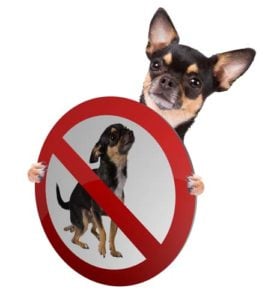 Do not bring a new dog into the house until your current dog is vaccinated. Bringing a new dog into an environment with an unvaccinated dog is just asking for problems. Pets can carry parvovirus without any way of knowing, and that can spread to your dog. Dogs from a shelter are even more likely to carry the disease (Black et al., 1979).
Do not bring a new dog into the house until your current dog is vaccinated. Bringing a new dog into an environment with an unvaccinated dog is just asking for problems. Pets can carry parvovirus without any way of knowing, and that can spread to your dog. Dogs from a shelter are even more likely to carry the disease (Black et al., 1979).
It is best to avoid bringing in a new pet at all until your furry pal is completely vaccinated for dog parvo.
Your Fido should have his third parvo shot before you consider adopting a new dog.
Once your pooch has that third shot, it is perfectly fine to expand your animal family; just make sure future dogs are vaccinated as well.
6. Disinfect Everything
Protecting your unvaccinated dog from parvovirus needs to be done at home as well.
If there is anything in or around your home that could possibly be contaminated with the dog parvovirus, disinfect it before your unvaccinated canine has the chance to make contact.
The virus can live on many different surfaces, such as dog food bowls, clothes, floors, and more. Parvo can survive for 5 months or more on surfaces.
Regular soap and washing will not clear parvo from a surface. Bleach is the best way to disinfect possibly contaminated surfaces.
Areas disinfected with bleach can still be infected with parvo, so keep your dog away from those areas as much as possible.
Discard anything that you are not able to disinfect. It is much harder to disinfect an entire yard, so if there is any chance another dog has roamed your yard, keep an unvaccinated dog away from the yard.
Unfortunately, studies show that there is absolutely no way to completely disinfect areas of grass and dirt, but high heat from the sun, which causes it to dry out, may be of some help (Houston et al. 1996).
Some pesticides work well for this. In particular, further research showed that potassium peroxymonosulfate is good for use on organic matter (Scott FW, 1980).
7. Deworm Your Dog to Reduce the Risk Of Parvo
Unvaccinated puppies have an incredibly low immune system, making them more susceptible to parvo.
Statistically, puppies between 6 weeks and 4 months are most likely to contract the dog parvovirus (Nandi et al. 2010).
If a puppy has any intestinal worms, their immune system can be even lower.
Worms in dogs can bring a plethora of health problems, but it also puts them at a higher risk of contracting parvo due to weaker immune systems.
Overall, preventing worms provides many health benefits to your dog and helps prevent the contraction of dog parvo.
There are two easy ways to prevent worms in your dog. The first way is to use a monthly heartworm medication.
These always include an intestinal dewormer. Monthly heartworm medications will require a veterinary prescription. This is the best way to avoid worms in your pooch.
Some people don’t like the idea of having to go to their vet for medication, so if you don’t want to use a prescription heartworm medication, you can use an over-the-counter dog dewormer four times per year.
Either way, you are preventing worms in your dog, which ultimately increases your chance of preventing dog parvo as well.
8. Know the Symptoms of Dog Parvo Virus
If your unvaccinated dog happens to contract canine parvovirus, you have to know the signs. Detecting the signs of parvo is the best way to ensure your dog will be treatable.
Remember that there is a 3-5 day incubation period after the dog contracts the virus until you actually see any symptoms of dog parvovirus.
Clinical signs will then persist for about 5 to 7 days, depending on the dose of the virus (Fletcher et al. 1979).
There are many symptoms to look out for. One of the first signs of parvovirus you may notice is a lack of energy.
This is due to the fever a dog with parvo will contract. Your dog's body temperature will also rise at first but then change as the dog starts to vomit or have diarrhea (Kramer et al., 1980).
If you see your dog lying down more, seemingly disinterested in normal activities, pay attention in case more symptoms arise.
Always look at your dog’s stool, and the color of feces. One of the main parvo symptoms is diarrhea (sometimes bloody), which is common in dogs of all ages but especially so in young puppies.
Studies observed that there is no specific type of stool to look for, and it may differ: the feces can be runny and possibly red or yellow in color. Normally, it will have a strong odor to it.
Vomiting is another common sign that your dog may have contracted parvo. Parvo doesn’t allow dogs to keep anything in their system, so there is frequent vomiting.
Your dog might try to drink more water to make up for the lost fluids, but it will come straight back out. Dehydration becomes another danger as a result.
Young puppies will die from shock in 2 days before any of the more prominent symptoms develop (Stann et al. 1984).
9. Visit Your Vet
If you suspect your dog has contracted canine parvovirus, you must go to the vet immediately.
Even if it’s 3 AM and you have work the next morning, there's no avoiding a trip to the clinic in order to save your dog’s life.
Parvo acts very fast. Studies show that dogs, particularly puppies, can die from parvo within 24-48 hours of contraction.
Dehydration or blood loss can contribute to the death of a dog due to the dog parvovirus.
The sooner a dog receives care, the more likely they are to survive this deadly virus.
Parvo home remedies are not recommended for this virus, as it is too deadly and acts too quickly to take any risks.
Your vet has all the tools to diagnose dog parvo right away, and if the results are positive, begin the immediate treatment.
There are a number of ways to diagnose canine parvovirus, including the CIE test, Fluorescent Antibody Test (FAT), Latex Agglutination Test (LAT), Virus neutralization test, MDCK's virus isolation, Enzyme-Linked Immunosorbent Assay (ELISA), loop-mediated isothermal amplification (LAMP) and more.
10. Treat Parvo With Supportive Care
Parvovirus does not have a definite cure; there are no drugs available that will directly kill the virus.
Instead, dog parvo is treated with supportive care. The sooner supportive care begins, the more likely it is that your dog will survive.
Restoring fluids in the dog's body will be a crucial part of this treatment (Woods et al., 1980).
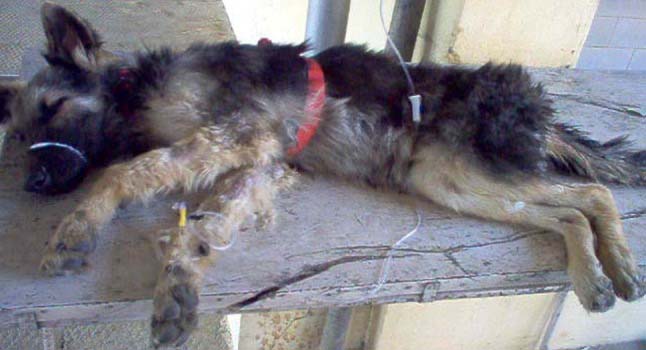
Dogs infected with parvo will receive antibiotics to prevent septicemia, probiotics to replenish natural intestinal flora, intravenous fluids for dehydration, injectable vitamins to boost the immune system, colostrum to fight the infection, and glucosamine to coat the intestines.
Dogs will usually be in the hospital for up to a week fighting parvo. Even with the best veterinary care, parvovirus is often fatal, which is why prevention is so important.
The Bottom Line
Preventing dog parvo is one of the most important responsibilities you have. This virus is incredibly deadly and is fatal when not caught right away.
A dog can die from canine parvovirus within hours. Vaccinating your dog is the only sure way to prevent parvo.
However, remember, a dog needs about three parvo vaccinations to be completely immune to the virus.
It takes 2-3 months to receive the entire series of dog parvo vaccinations, so take extra precautions during those months.
Puppies have weaker immune systems and statistically are far more susceptible to parvovirus, which will be fatal.
Understanding the symptoms of parvo is a good way to ensure your dog will survive if they catch parvo.
The quicker you are able to recognize that your dog may have parvo, the faster you can get your dog treatment.
At home remedies and DIY treatments are rising in popularity for many dog related illnesses, however, they should never be used for parvo.
It is unlikely that a vet will be able to treat parvo, and even more unlikely that you will be able to do it at home with unproven treatments.
READ NEXT: The Detailed Puppy Shot Schedule


